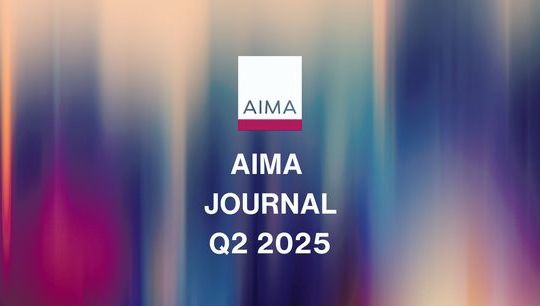Potential impacts of Basel III liquidity regulations on the prime broker / hedge fund dynamic
By Edward Grissel, Prime Brokerage Sales, and John Duckitt, Financing Risk , Nomura International
Published: 31 March 2015
On 15 January 2015, Nomura Prime Finance hosted an AIMA Hedge Fund Manager Training event. The topic for discussion was the potential impacts of Basel III regulations on the global hedge fund industry, with specific reference to the Liquidity Coverage Ratio (LCR), Net Stable Funding Ratio (NSFR) and the Leverage Ratio. Although the session was held under Chatham House Rules, this article intends to look at some of the key themes and topics covered whilst maintaining institutional anonymity.
What are the Basel III liquidity regulations?
The Basel III liquidity regulations consist of the LCR and the NSFR. The leverage ratio also falls under the Basel III umbrella, and these three new sets of rules are expected to significantly change the relationship between hedge fund and prime broker. The phasing in of LCR has begun as of January 2015 and will be fully implemented by 2019. The NSFR and the leverage ratio are due in January 2018 and are expected to have a much broader impact on the global financial industry.
The LCR is designed to ensure that financial institutions have the necessary assets on hand to cope with short-term liquidity disruptions. Banks are required to hold sufficient high quality liquid assets (HQLA) to cover a stress scenario of net cash outflows over a 30-day period. Although the 2015 Basel recommended HQLA holding requirement is at 60% of net cash outflows, this changes depending on jurisdiction. It is expected that many banks have been early adopters where they are near if not fully compliant.
The NSFR is the next phase of Basel III’s liquidity regulation, and is intended to address liquidity mismatches and reduce dependence on the short-term wholesale funding market. Although it will not be enforced until 2018, it is also likely to be adopted well before its implementation date. By definition, the NSFR is a ratio of the Available Stable Funding (ASF) and the Required Stable Funding (RSF), which for compliance should be equal to or greater than 100%. The ASF is defined as the proportion of capital and liabilities expected to be reliable over the time horizon considered by NSFR, which extends to one year. The RSF is calculated as the weighted sum of the value of assets held and funded by the entity, including off-balance sheet exposures where weights are assigned to each RSF asset category. The RSF is higher for illiquid assets and lower for liquid assets. The ASF is higher for a long-term stable source of funding and lower for short-term unstable sources.
The leverage ratio aims to restrict the build-up of leverage in the banking sector and to reinforce the risk-based requirements with a simple, non-risk based “backstop” measure. Banks must hold sufficient tier 1 capital relative to their exposure so that the leverage ratio does not fall below 3%. Another way to look at it is that the assets and commitments should not represent more than 33 times the regulatory cap, regardless of the level of their risk weighting or whether the credit commitments are drawn or not.
The leverage ratio and NSFR will change depending on the jurisdiction in which the prime broker is regulated and its G-SIB Status. As of February 2015, there has been some transparency from various regulators surrounding the leverage ratio however few have commented on the NSFR.
How will this impact hedge fund industry?
The Basel III liquidity regulations and the leverage ratio are set to transform the role banks play at distributing and transforming assets and, more specifically, the traditional prime brokerage model.
Impacts of the LCR so far have been felt where prime brokers have moved away from funding positions overnight towards a >30 day financing term funding model. When asked to what extent hedge funds had felt an impact from LCR, the general consensus at the event was that any increase in financing cost had been absorbed by the prime brokers, rather than passed onto clients.
However, the hedge fund industry has already begun to experience more direct conversations regarding meeting bank hurdle rates of various return metrics, with those unable to meet the criteria being asked to exit platforms. Following on from the implementation of the leverage ratio in particular, prime brokers are likely out of necessity to become increasingly focused on balance sheet usage and, more importantly, returns expected for utilisation. The emerging industry trend of off-boarding of hedge fund clients in recent months indicates that prime brokers are already experiencing resource constraints, where balance sheet is being reallocated to higher yielding areas. The NSFR will also raise the profitability hurdle by likely raising costs, and forcing banks to use longer term funding for transactions.
In combination, the NSFR and the leverage ratio present a high probability that prime brokers will eventually be forced to pass on the additional costs to end clients and as already appears to be happening, hedge funds can expect more difficulty in obtaining leverage, higher costs and an increased rate of off boarding.
How can hedge funds mitigate the impacts?
In order to be an efficient financing partner, the hedge fund-prime broker relationship must be mutually beneficial, a point on which everyone at the event agreed.
- Consider the benefit you offer as a counterparty. Whilst MIFID II outlines the importance of unbundling and transparency of costs, which we certainly do not dispute, it is vital for hedge funds more than ever to consider what they mean as a counterparty overall. Hedge funds must consider the range and scale of services used and to what extent they are meaningful. Post-2008 saw asset managers diversifying counterparty risk by increasing the number of counterparties they dealt with, now there may be a need to consolidate in order to be meaningful.
- Transparency is key. Where a hedge fund has multiple prime brokers, balances must be allocated efficiently. This can be achieved by asking prime broker(s) which type of balances they would like to see. Through active dialogue, hedge funds may be able to proactively reallocate balances for mutually beneficial optimisation. It appears that larger hedge funds are already taking this approach, however for the smaller hedge funds (who this is more relevant to) few seem to be doing this.
- Manage your collateral effectively. Typically hedge funds have managed collateral separately across products such as stock loan, OTC and listed derivatives, FX/currency etc. In order to efficiently manage this process, clients now have to bring these different parts of the organisation together to create a centralised function. Some are even allowing these units to leverage the collateral pool to generate a P&L for the firm. It is apparent that even at the smaller asset managers, treasury functions will have to become much more sophisticated. Some treasuries may even be able to generate alpha in their own right through intelligent use of collateral management and lending of unencumbered cash balances.
- Look for the opportunities. As banks retreat from business areas with traditionally low margins, or those that have been disproportionally hit by regulation, shadow banking could move in to pick up the slack. This could potentially change the role of banks to one of originators and advisors, with balance sheet provided by a bank’s clients rather than the bank itself. Although it remains to be seen exactly what form this relationship would take, natural candidates for balance sheet providers would be established credit hedge funds, given their pre-existing expertise in esoteric credit instruments,
- Evaluate your strategy and be nimble. We were asked which strategies are most affected by this oncoming regulation. This is a tough question to answer due to the sheer number of interplaying parts. However, the feeling at the event was that hedge funds would need to be aware of what their relationship as a whole is worth to the bank. The best way to evaluate the vulnerability of a strategy will be to consider the extent to which the portfolio is user of bank balance sheet.
To conclude, it seems that a large proportion of the sell side are yet to be actively approached by the buy side regarding the extent to which the new Basel III rules will impact their business. Banks will be affected differently due to their set up, location and existing business composition; however all are likely to face increased costs and greater focus on balance sheet usage as a result of NSFR and the leverage ratio. The buy side should be prepared for this. If the early adoption of the LCR is any guide, banks will not wait until 2018 to become compliant with the NSFR and leverage ratio and are likely to implement from late 2015.
At the end of the event, the overall consensus was that the likely result of Basel III is the reversal of the dispersion of counterparty relationships and hence a re-concentration of prime brokerage relationships, although most likely not to the extent of pre 2008. The new prime brokerage- hedge fund relationships that survive can only be more significant, fully transparent and mutually beneficial.








